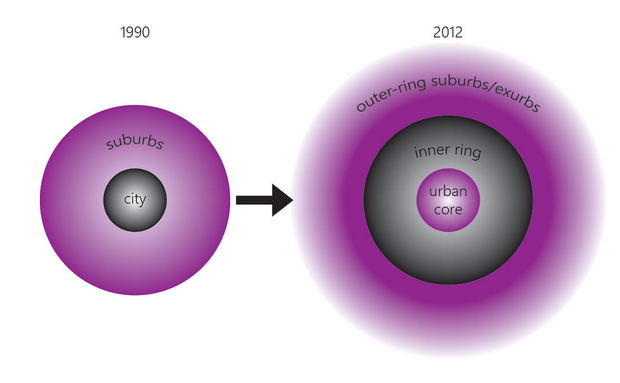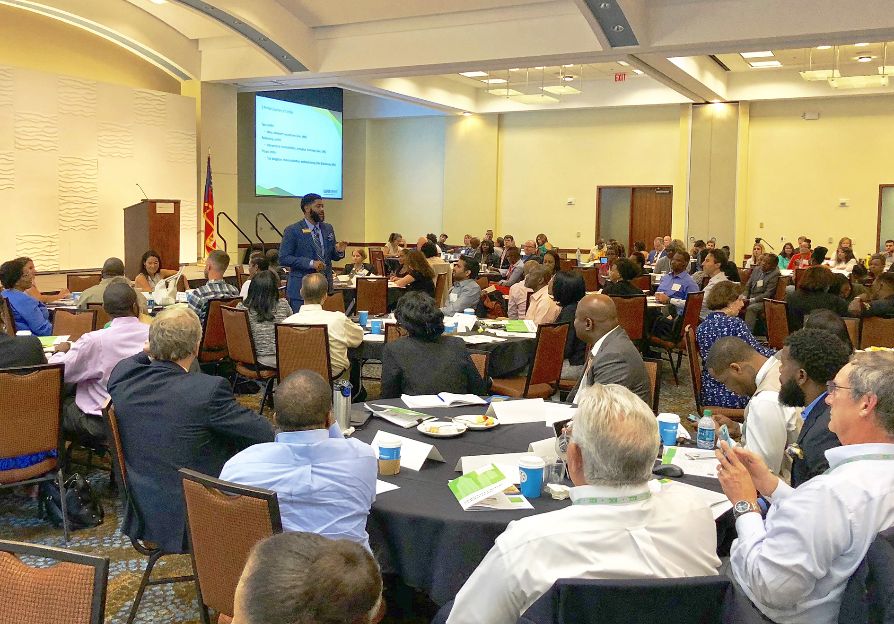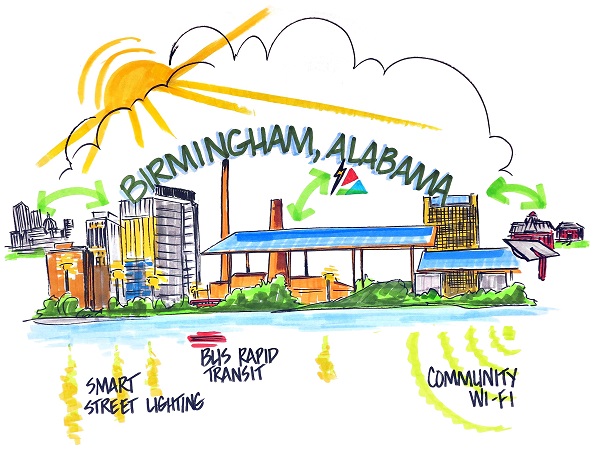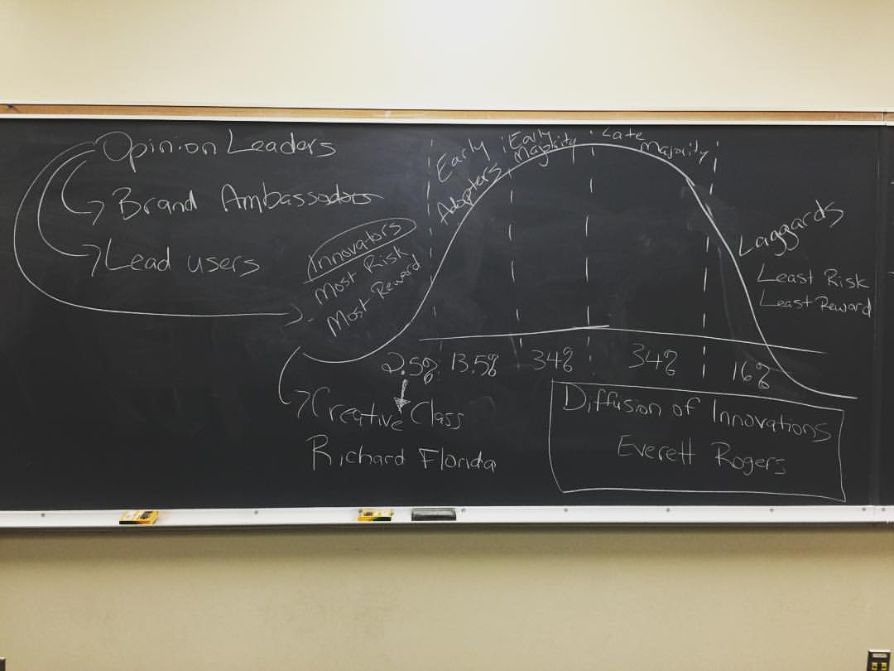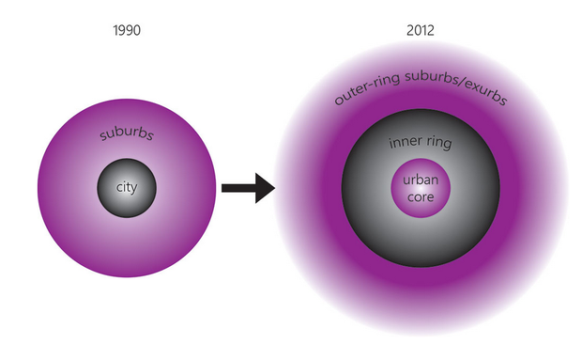
Image taken from CityLab: Original caption from the article reads: “A report provides new data backing Aaron Renn’s “new donut” model for cities, but it also highlights key exceptions to the model. (Weldon Cooper Center for Public Service/University of Virginia).”
This Chart Tool Shows How City Centers Are Doing Better Than Inner Suburbs
The CityLab article above describes the concept of “donut holes” —cities in which depressed downtown urban cores are surrounded by inner and outer rings of varying levels of prosperity and growth. However in many cities, the downtown urban core is experiencing new economic and residential growth, driven partially by corporate and residential relocation from outer rings into the city center. In other cities, downtown urban cores remain depressed as business and residential owners prefer inner and/or outer ring communities.
Intrigued, I took the liberty of investigating the structure of the Birmingham region via the University of Virginia’s Demographic Research Group‘s data visualization tool. On face value, the data seem to indicate demarcation points at 7 and 12 miles removed from the center of Birmingham’s core. That is, we seem to have an urban core that is 0-7 miles from the center, an inner ring that is 7-12 miles from the center and an outer suburban ring greater than 12 miles from the center.
For example, the highest levels of education occur between 7 and 12 miles from Birmingham’s center:

Per capita income seem to be greatest between 7-12 miles from the city center albeit with a long gradually decreasing tail thereafter:

In 1990 (orange line), the highest levels of occupied housing were found 4 miles from Birmingham’s city center. In 2012 (maroon line), the highest levels occur between 5-10 miles from the core.  While illustrative, these data don’t tell the complete picture. In my estimation, one of the weaknesses of the “donut hole” perspective is it’s assumption of a fully enclosed circle around the city center. Instead, I suspect that in many cities such as Birmingham, the area immediately surrounding the city center resembles more of an arch (50% closure ) or a crescent (75% closure). For example, in Birmingham, several communities surrounding the city center to the south (e.g. Hoover and Homewood), east (e.g. Trussville) and north (e.g. Fultondale and Gardendale) of downtown enjoy considerable educational, social, economic, environmental and health-related advantages over western area communities (e.g. Bessemer, Brighton, Fairfield). In this way, Birmingham may possess more of a crescent type structure than that of a donut.
While illustrative, these data don’t tell the complete picture. In my estimation, one of the weaknesses of the “donut hole” perspective is it’s assumption of a fully enclosed circle around the city center. Instead, I suspect that in many cities such as Birmingham, the area immediately surrounding the city center resembles more of an arch (50% closure ) or a crescent (75% closure). For example, in Birmingham, several communities surrounding the city center to the south (e.g. Hoover and Homewood), east (e.g. Trussville) and north (e.g. Fultondale and Gardendale) of downtown enjoy considerable educational, social, economic, environmental and health-related advantages over western area communities (e.g. Bessemer, Brighton, Fairfield). In this way, Birmingham may possess more of a crescent type structure than that of a donut.
Although Birmingham, like many cities, is seeing renewed interest in the city center and select inner city neighborhoods, the outer suburban ring still maintains considerable advantages over the inner city. However, if recent articles about rising poverty levels in the suburbs of Atlanta and Maryland are any indication of future trends, there may come a time when the proximal and structural advantages currently enjoyed by our suburbs may become their greatest disadvantage.
These changes create opportunities to enhance economic, environmental and social well-being in our communities. Those who are entrepreneurially-oriented (i.e. risk-takers, innovators, proactive, independent thinkers, and competitively aggressive) as it relates to their housing decisions may be best positioned to create and capture value from these changing residential and commercial patterns. Indeed, we’ve already seen such community-based entrepreneurial behavior in some of Birmingham’s inner ring neighborhoods such as Woodlawn, Avondale, Crestwood and Norwood. Those that fail to make adaptive changes, such as those in the articles focused on suburban Atlanta and Maryland mentioned above, may be prone to negatively disruptive forces.
I encourage you to visit the UVA research site and look at the data for your own city. What do the data suggest about the structure and dynamics of your region? What strategies should you consider implementing to create value for yourself and your community?

